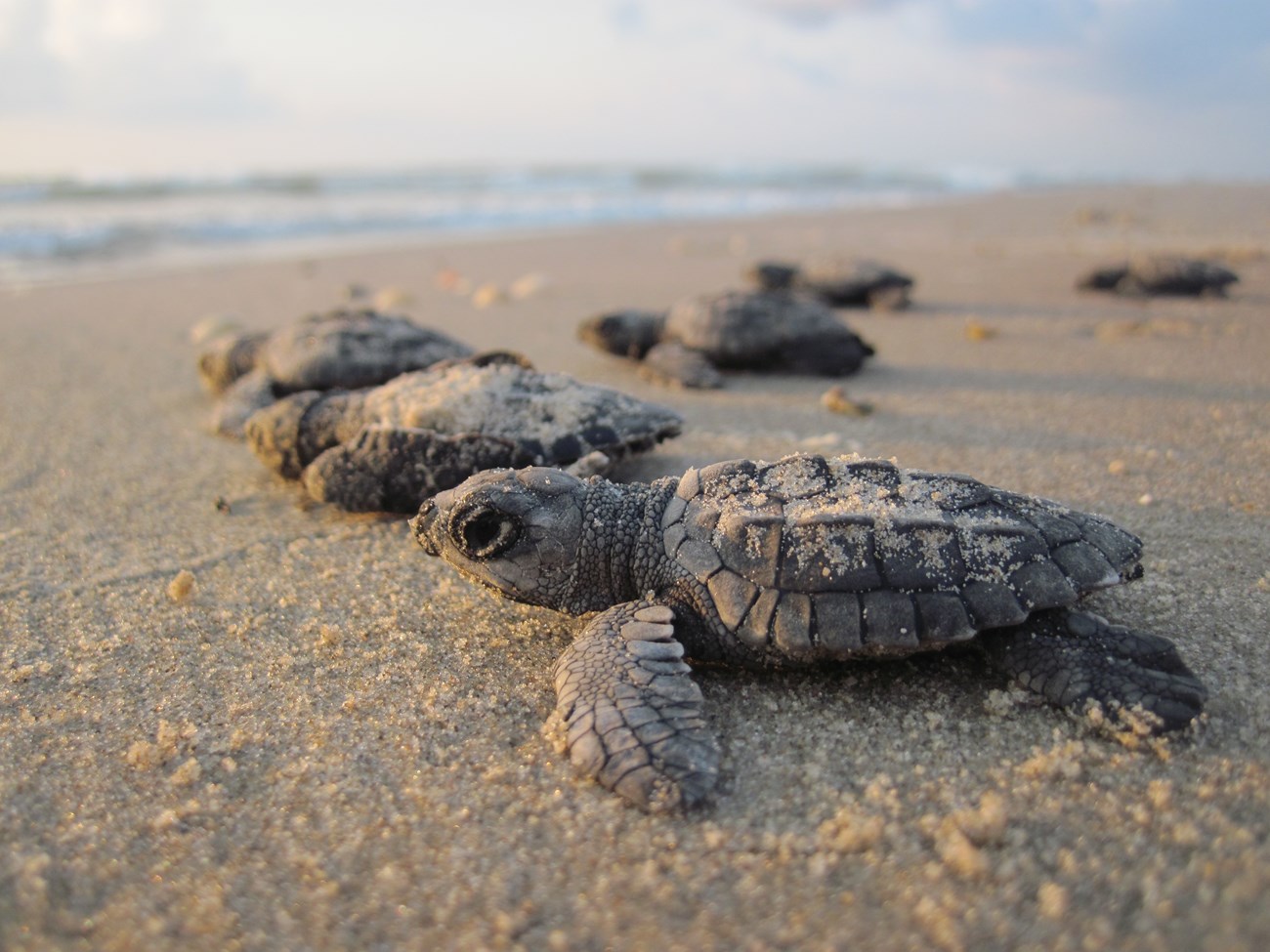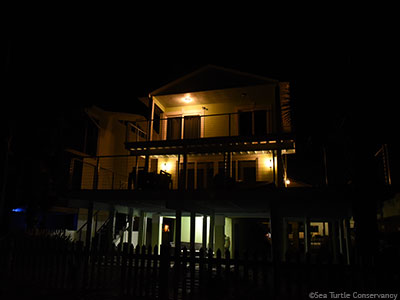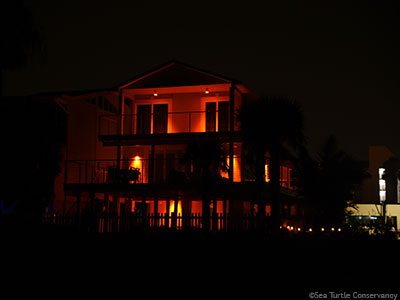We have much more to do and your continued support is needed now more than ever.
Can Turning Off the Lights Save a Sea Turtle?

Why Sea Turtles?
Sea turtles are an impactful species along the Gulf Coast. They act as a home and transportation for many species like barnacles and algae, and – thanks to their incredible cuteness! – they are tourism drivers, helping the economies of many coastal communities. Our Gulf Coast provides vital habitat for five of the seven species of threatened or endangered sea turtle species, and Florida’s beaches alone provide a globally important habitat for 90% of all Loggerhead nests in North America. Despite this, sea turtles are facing many threats, including something we all use every day: artificial lighting.
Lights vs. Sea Turtles
For centuries, sea turtles have depended on the brightest horizon in the night sky to direct them to the ocean. Before humans, the celestial light reflecting off the ocean’s surface created a natural beacon to guide them back to the marine environment. But human-made artificial light is disorientating sea turtles and contributing to population decline.

Heavily lit beaches can cause nesting sea turtles to have a false crawl. False crawls occur when a nesting sea turtle goes on land to lay her eggs but decides the beach is not suitable, causing her to exhaust lots of energy. Any light indirectly or directly visible from the beach can cause disorientation for both adult nesting sea turtles and hatchlings; both will go toward the artificial light thinking it is the ocean. Disorientation can cause sea turtles to become exhausted or dehydrated but can also leave them stranded in a street or swimming pool, says Florida Fish and Wildlife Conservation Commission (FWC). Ultimately, disorientation can be fatal.
What Lights Cause Disorientation?
People often wonder, “Do all lights cause disorientation?” The simple answer is yes. No artificial light is good for sea turtles. Any light indirectly or directly visible from the beach can cause disorientation. This includes, but is not limited to, interior home lights, pool lights, street lights, flashlights, and sky glow.
However, we don’t need to live in the dark to help sea turtles. Research has shown that artificial lights with a wavelength of 560 nanometers or longer that are low to the ground and shielded to keep light from being viewed from the beach largely reduces the amount of disorientated sea turtles. Sea turtle-friendly lights are safe for humans, too! They reduce the glare for drivers and can improve sleep compared to white LED lights, according to the American Medical Association.


Lighting Ordinances
On the bright side, there is still time to help sea turtles. Local governments along the coast of Florida are enforcing and updating their lighting ordinances with the common goal of reducing the harmful effects of artificial lights during sea turtle nesting season. To help guide local governments in this effort, the Florida Department of Environmental Protection released a Model Lighting Ordinance in 2020 incorporating the best available science and technology for coastal communities to utilize. It is also an ideal lighting ordinance because of its clear language and enforceability. Without a lighting ordinance, more and more artificial lights will continue to appear on the coast, leading to an increase in the amount of disorientated sea turtles. Every sea turtle lost pushes the species closer to extinction.
How NWF is Engaging
The National Wildlife Federation’s Gulf Program has been working for decades to improve sea turtle habitats and protection across the Gulf of Mexico. Together with our partners at Sea Turtle Conservancy (STC), we have been assisting local governments along Florida’s coast to improve lighting ordinance language to help ensure better protection for sea turtles. In collaboration with STC we have also launched a user-friendly website with tools residents and local governments can use to update and enhance their lighting ordinances. Our website compares local Florida policies to the 2020 Model Lighting Ordinance, giving scores based on clarity of language and how well they are implementing their ordinance. An interactive map helps users view the data in an accessible way, with an eye to brightening the future for sea turtles – while using better lighting.





















